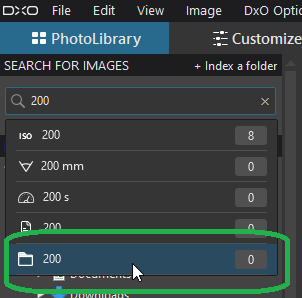


I don't think control point is the good tool for the entire image.īrush and Graduated Filter are classical and convinient.Īnd, above all, Auto Mask, According to my practice, this is the most effective type of maskĪnd how do I remove parts of a control point adjustment? The dialog box says to use Alt+click for a minus type control point but all that comes up is a control point just like the original? The control point can not be made large enough to cover an image with my 7000px files for a global adjustment? I am a bit baffled by some of the local adjustments. Thank you for this thread and DXO tutorials. Other than that, there's always ImageMagick. Other than that I can always invoke Topaz Detail or Nik Output Sharpener plugins from the viewer, just like from PhotoLab 2.3.įastStone, IrfanView, ACDSee or Affinity Photo offer variations of Lanczos so you can always try how it compares to bicubic or bilinear.
#Dxo photolab 2 video tutorials free#
I use the free XnViewMP and it gives me a preview of what resizing/sharpening will look like when converted. It sometimes worked with some cameras/lenses but frequently I preferred zeroing the Details or disabling the Lens Sharpness altogether and applying sharpening with a control point. and you think it's better with a photo viewer !?ĭxO proposes bicubic and billenar algorithms. In this case you can action the Global cursor. As it is, I output a full-sized file from PhotoLab2 and do my resizing and output sharpening in my photo viewer. And people are hoping that the Nik Output sharpener facility actually gets ported some day to the Export dialogue. At least they could offer a Lanczos algorithm for resizing. Great efforts were made on this point during the release of DPL 1.ĭxO recommends exporting small images with the bicubic option. You accentuate the image as you wish and the system transposes according to the desire dimensions. What do you use to sharpen for media type? Where is Export sharpening? I assumed it was USM. YES and better with fine contrast (FilmPack functionality) I seen the word Creative so I assume that's its job. This helped to combat a watercolour effect that was starting to creep in as a result of sloppy demosaicing and deconvolution.Ĭreative sharpening is achieved by MicroContrast.

I have come across images where I had to disable the deconvolution-based sharpening behind the Details slider (Lens Corrections) and used a very light pass of USM as part of my capture sharpening routine. So either Lens Corrections or USM covers Capture sharpening I assume? If your lens is characterized by DXO then you don't need USM. We know about the 3 phases of sharpening. The difference between lens correction and USM is interesting.


 0 kommentar(er)
0 kommentar(er)
